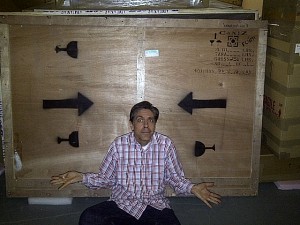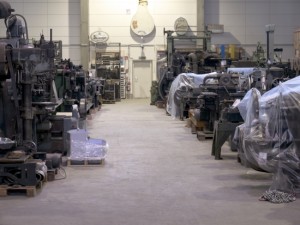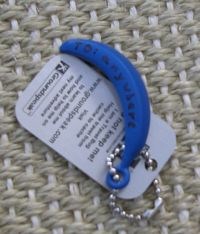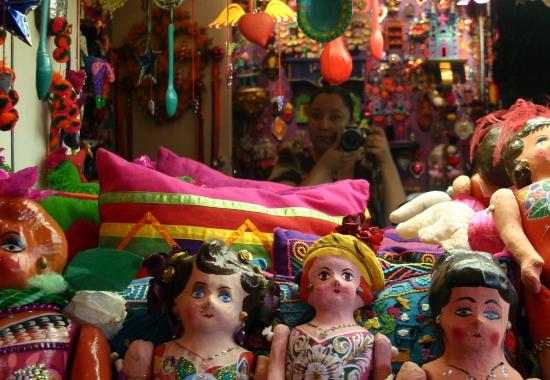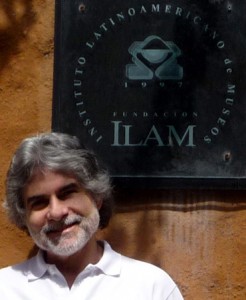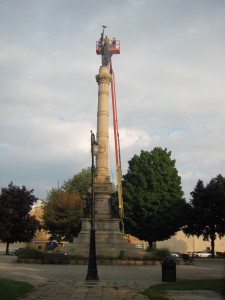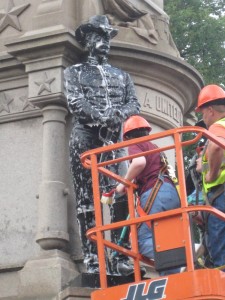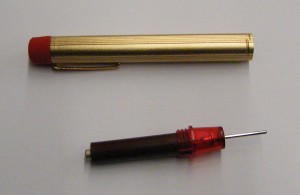More about the registrar in the museum’s collection
Fernando Almarza Rísquez
On previous occasions I have written on the role and scope of the registrar of museum collections, his professional education and working style. My most recent publication (in Spanish) on this appeared last October. Following this, I’d like to add some additional thoughts:
The registrar should be a broad-minded and critically thinking individual. “Smart” registrars have to be up to date with the developments, reflections and concerns that arise and evolve in their professional field and in museums and museology in general. The critical registrar is a museum practitioner as well as a museologist (to the extent that reflects and contributes about theories, trends and analysis of museology).
The information which is recorded on the museum’s collection can be regarded as a mine of knowledge and as a place where meaning and significance is growing. The registrar in the first instance generates, commands and controls that information. He / she is the “gateway” to the museum’s collections, both for the informational dimensions and for the objects themselves.
The critical registrar has to have substantial knowledge of the object or artifact itself. He has to take care that all the important „technical“ data goes into the documentation files in the right form, may it be paper or computer files. Today, this means also that the registrar needs profound computer knowledge so he / she can bring this information in the computer / data base in a way that makes it accessible to other staff members, scientists and the public. Therefore the registrar has to be up to date with current developments in computers and information technology. The critical registrar thinks broadly, innovates and creates and has high standards regarding quality, transparency and honesty.
In addition to the data the registrar collects himself he is responsible for bringing object data from other experts like curators or scientists into the records. The critical registrar has to find the correct form of documenting and making the data accessible. The way he does this depends on the nature of the object and data: this includes (but is not limited to) natural or cultural heritage, tangible and intangible, cultural and ethnological contexts.
The profile of a critical registrar can be summed up by the following points:
In control, but not limited to the bureaucratic aspects concerning the office: files, phones, plans, storage places, locations and security monitoring, insurance paperwork, loan agreements, transportation, packaging, emergency and preventive conservation, legislation, tax concerns, organization, custody;
Working in a team: Working as a gateway to different professions inside and outside of his / her own department. Cultivates an interdisciplinary relationship, in consensus and not in conflict with other museum professionals, especially curators, conservators, exhibition designers and educators. He/She knows what identifies and unites, and what differentiates and binds to other museum professionals, in a practical exercise integrator: that of the similarity (to work in the museum and perform its functions) and the difference (of roles, scopes, sights and situations and cooperative organizational structure of the museum and its collections);
More than a boss, a leader, a manager, especially if he/she is leading a team of registrar assistants or aides. He / she does not command, but advises and guides, stimulates, delegates and supervises the work. He / she acknowledges and shares the successes achieved by the team or individual staff members. He / she thinks pluralistic and always in favor of his or her institution and team. He / She cares about his/her staff, promoting their potential and abilities, creating an atmosphere of honesty and devotion to the work. He/she is proactive, resilient, and rejects the procrastination. His or her way of leading is an emotional intelligent one: he / she thinks logical without suppressing his/her feelings and allows feelings without blurring the logical sight;
A co-educator, aware that the information in his/her records provides additional data that helps to enable and facilitate constructive knowledge and to stimulate others (museum professionals, the public and consultants from the collection) to re-learn and re-teach. He/She knows that “teaching is not to transfer knowledge, is to create the possibility of producing it” (Paulo Freire). The critical registrar re-learns permanently and joyfully;
A thinker with extensive concepts and relationships, which integrates into his/her daily practice visualizing, representing and transmitting as living processes of a creative-conceptual mental map of the collection. Together with museum colleagues, the critical registrar develops and shares ideas and strategies for an intelligent, inspiring and interactive access to information. He / she thinks in all possible ways, connects internationally and keeps information about meaning and significance of objects as well as and ideas flowing – using all possibilities including virtual catalogs of the collection and powers of Web 2.0 resources.
According to the profile of the museum or heritage collection in which he / she holds the responsibility as a registrar and/or team leader he / she must have as far as possible an appropriate education and training. This holds true for the knowledge about the technical aspects of his / her work as well as for the knowledge about history, meaning and significance of the natural and/or cultural heritage of which the collection consists. This means also – like stated before – that the critical registrar never stops learning but keeps up to date with the debates in the scientific community that is linked to the topics of his / her museum and collection.
The critical registrar is aware of these concepts. He / she keeps updated and considers to apply new concepts regarding definitions and categories of assets. This means today there is not only the basic division between the natural and cultural heritage, and the subdivision of the latter into cultural-material and cultural intangible heritage. Today, there is also the division between the natural-material tangible and natural intangible heritage. The current understanding of the dimensions of meaning and significance of the objects of collections have been expanded. New approaches have been developed beyond the dichotomy “natural” versus “cultural”. The concept of“Natureculture”
To keep an open and critical look and be willing to integrate new criteria in the everyday working process doesn’t stop here. The critical registrar has to stay informed in all dimensions of his / her profession and in the sciences his / her museum deals with. Fields of knowledge evolve, including the museum and museology. The benefit in staying critical and informed is not only for the registrar himself, it’s also for his / her team, other museum professionals, the museum and not at last for the public.
This post is also available in Italian, translated by Davide Bordenca






